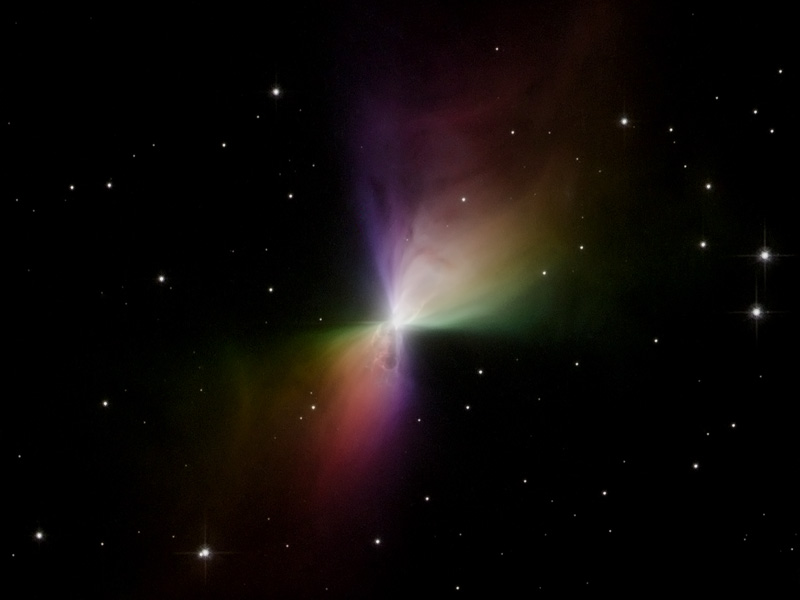The Boomerang Nebula in Polarized Light

Explanation:
Why did the Boomerang Nebula form?
The symmetric cloud dubbed the
Boomerang appears to have been created by a high-speed
wind of gas and dust blowing from an aging central star at
speeds of nearly 600,000 kilometers per hour.
What confines the wind remains a
mystery though -- it may be a central disk of dense gas or a central
magnetic field.
The rapid expansion itself, however, has cooled molecules in the
nebular gas to about one degree above absolute zero - colder than even the
cosmic background radiation - making it the
coldest known region in the distant Universe.
Shining with light from the central star reflected by dust, the frigid
Boomerang Nebula is believed to be a
star or stellar system evolving toward the
planetary nebula phase.
To help better understand the Boomerang's origin,
astronomers are studying the
above image taken in
polarized light,
color coded by an angular direction associated with the
polarization.
Different progenitor scenarios create different amounts and patterns of
polarized light.
The
above image was taken by the
Hubble Space Telescope's
Advanced Camera for Surveys earlier this year.
The Boomerang Nebula spans about one
light year and lies about 5,000 light years away toward the
constellation
Centaurus.
Authors & editors:
Robert Nemiroff
(MTU) &
Jerry Bonnell
(USRA)
NASA Web Site Statements, Warnings,
and Disclaimers
NASA Official: Jay Norris.
Specific
rights apply.
A service of:
LHEA at
NASA /
GSFC
& Michigan Tech. U.

